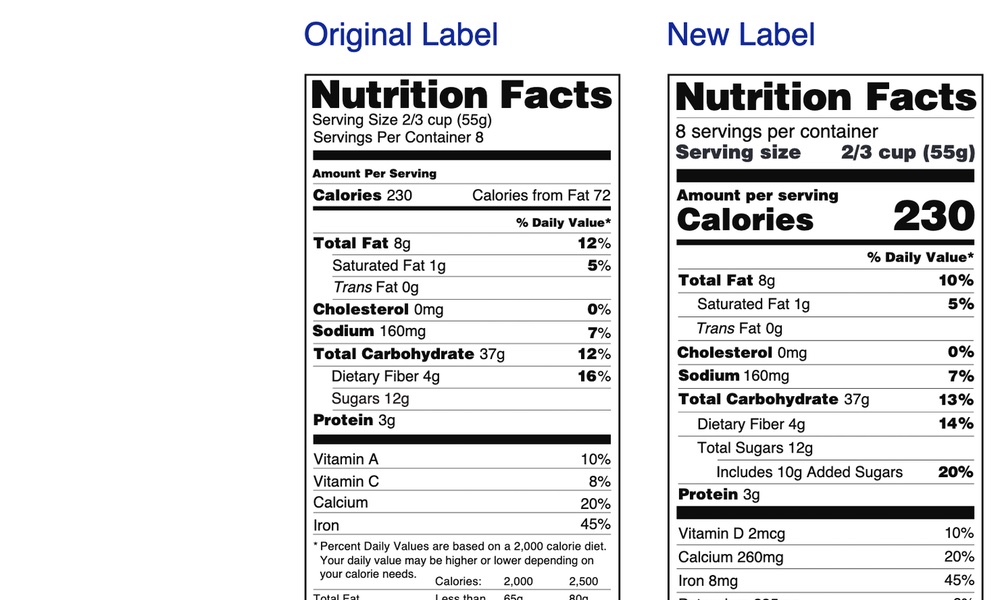It doesn’t take a degree in nutrition to read the labels on foods at your local supermarket, but maybe a little help from a registered dietitian nutritionist would make all that nutrition jargon easier to understand.
Nutrition labeling on packaged foods consists of the Nutrition Facts label and an ingredient list. When food manufacturers make nutrition claims on their packages such as “low sodium” or “reduced calorie,” those claims have specific meanings which are explained below.
Here is the best way to read the Nutrition Facts Panel and decipher the other information on a food package:While calories are an important consideration, you also need to consider the amount of nutrients listed on the Nutrition Facts label.
Next, check out the calories per serving. Ask yourself if you are willing to spend this much of your daily calorie allowance on this food item. We all have a calorie allowance, a number of calories that will allow us to maintain our current weight. Eating fewer calories will result in weight loss, while eating more calories will result in weight gain.
Scan the Percent Daily Values column, numbers based on a 2000-calorie per day diet. If you eat more or fewer than 2,000 calories a day, these numbers won’t specifically apply to you, but they can act as a guide. For example, a food that provides five percent of a nutrient is low in that nutrient. A food that provides 20 percent of a nutrient is a high source. Choose foods that are low in saturated fat, trans fat, cholesterol, added sugars and sodium. Select foods that are high in vitamins, minerals and fiber.
Cutting back on saturated fat, sodium and added sugars may reduce your risk of developing chronic diseases. Foods that are high in saturated fat and trans fat may increase your risk of heart disease. Eating too much sodium may raise your odds of developing high blood pressure.
If you eat too many foods that are high in sugar, it makes it hard to meet your nutritional needs and stay within your calorie allowance.
Carbohydrates have two subcategories, fiber and sugars, with added sugars listed separately. Sugar is not a word to be feared. Some foods contain natural sugars like lactose in milk or fructose in fruit. Do pay attention to the amount of added sugars though. No more than 10 percent of your daily calories should come from added sugars, so look there for a low number or zero.A food that provides five percent of a nutrient is low in that nutrient. A better source is a food that provides 20 percent.
Whole grain breads, cereals, rice and pasta plus fruits and vegetables will provide varying amounts of fiber. The higher the number the better.
Protein is a nutrient that you should eat in moderation, but the FDA does not require a Percent Daily Value since protein requirements vary between people. Good sources include lean meat, poultry, fish, eggs, low-fat dairy foods, peanut butter, soy products, beans, peas and nuts.
Packaged foods are required to list the ingredients in the food. This information can be valuable to people who have food allergies or sensitivities, people wanting to watch their sugar, sodium or fat intake, or people who choose not to eat any type of animal products.
Ingredients are listed in order from what is present in the greatest quantity to what is present in the smallest quantity by weight. For example, if you want to buy whole wheat bread, then the first ingredient in the list should be whole wheat. If you’re trying to avoid added sugar, it should not be listed among the first few ingredients in a food.
The Nutrition Facts label has been appearing on packaged foods since 1994. Little has changed over the years, but in 2016 the Food and Drug Administration revised the rules for the label to reflect new scientific information about the relationship between nutrition and chronic diseases and to make it more user friendly. Some food manufacturers have already made the change, but not all. By January 1, 2021, all packaged foods must comply with the new labeling requirements.
Read more about changes to the Nutrition Facts label by visiting the FDA website.





